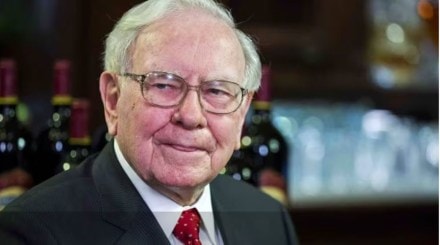Warren Buffett, often hailed as one of the greatest investors of all time, has left an indelible mark on the world of finance through his consistent and astute investment strategies. Robert G. Hagstrom’s book, ‘The Warren Buffett Way,’ distils Buffett’s approach into twelve golden rules that have guided his investment philosophy. These rules offer valuable insights into the mind of a master investor, shedding light on the principles that underpin his remarkable success.
Simplicity and Comprehensibility:
The first rule underscores Buffett’s preference for simplicity and understanding in business. He avoids companies with overly complex and technical operations, favoring those that can be easily comprehended. This principle reflects his belief in investing in what he knows, a foundational concept in his investment strategy.
Consistency in Operating History:
The second rule emphasizes the significance of a consistent operating history. Buffett gravitates towards businesses that have maintained a track record of selling similar products or services over the years. This predilection for stability and predictability aligns with his aversion to risky ventures and his penchant for long-term investments.
Also Read: Fixed vs Floating Interest Rate: Which is better for home loan?
Franchise Model and Desirability:
The franchise model takes centre stage in the third rule. Buffett seeks businesses with desirable products or services without close substitutes and heavy government regulation. This criterion highlights his attraction to companies with competitive advantages that set them apart in their industries.
Wise Capital Allocation:
Capital allocation takes the spotlight in the fourth rule. Buffett values companies whose management allocates capital judiciously, striving to maximize returns on newly invested funds. If a company’s profits fail to improve with a new capital infusion, he advocates returning excess funds to investors through dividends, a testament to his commitment to shareholders’ interests.
Adherence to Fair Accounting Practices:
The fifth rule extols the virtues of fair accounting practices. Buffett looks for companies managed by individuals who adhere to transparent and ethical accounting standards, reinforcing his commitment to integrity and sound financial reporting.
Honesty and Intelligence:
Honesty and intelligence form the bedrock of the sixth rule. Buffett values management that communicates decisions clearly to shareholders, irrespective of the outcomes. This emphasis on forthrightness underscores his belief that honest and intelligent leaders create a culture of trust and informed decision-making.
ROE Over EPS:
Buffett’s focus on Return on Equity (ROE) over Earnings Per Share (EPS) becomes apparent in the seventh rule. He recognizes that ROE more significantly impacts investors in the long run, as it reveals a company’s ability to generate returns on shareholders’ equity.
Capital Efficiency:
The eighth rule delves into capital expenditures. Buffett prefers companies with limited ongoing capital requirements, favouring those that demand substantial initial investments but exhibit lower maintenance costs. This approach resonates with his interest in preserving capital and seeking efficient use of resources.
Low-Cost Operations and High Profit Margins:
High profit margins and low-cost operations shape the ninth rule. Buffett values companies that derive profitability from core operations rather than relying on profits from miscellaneous asset investments. This underscores his preference for sustainable, intrinsic business value.
The One Dollar Promise:
The tenth rule introduces the concept of the “One Dollar Promise.” Buffett requires that each dollar retained from earnings must generate at least one dollar in market value over time. This principle underscores his emphasis on value creation and disciplined capital allocation.
Valuation through Future Cash Flow:
In the eleventh rule, Buffett’s valuation methodology takes centre stage. He calculates the future cash flow of a business and discounts it using an appropriate interest rate to determine its intrinsic value. This approach reflects his meticulous analysis and rational decision-making process.
The Margin of Safety:
The twelfth rule, the cornerstone of his investment philosophy, encapsulates the notion of a “margin of safety.” Buffett seeks companies whose shares are priced below their intrinsic value, ensuring a cushion against potential market fluctuations. This cautious approach aligns with his aversion to unnecessary risk and preference for solid, long-term investments.
In conclusion, Warren Buffett’s twelve golden rules, distilled from Robert G. Hagstrom’s book, offer a comprehensive insight into the mind of a legendary investor. By adhering to these principles, investors can gain a deeper understanding of Buffett’s remarkable success and apply these timeless strategies to their own investment endeavours.
(By Ravi Singhal, CEO, GCL Broking. Views are personal)
